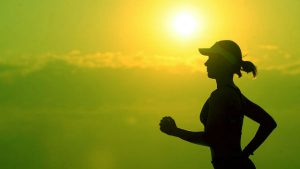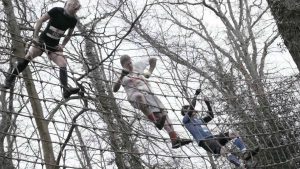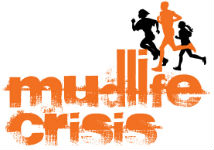Since starting to do the weekly #OCRChat on Twitter a few months ago, I’ve been chatting with a fellow named Johnny Stinson, a budding obstacle racer from Ontario. He told me about how he was looking forward to doing his first Spartan Race and was voraciously gathering information on best practices for training, etc. and I was helping him as much as I could (while also learning a lot from him in what he was doing). Johnny has just recently completed that Spartan (A-ROO!) and wanted to share with us a little bit about his discoveries about Flow State. Please read his blog post first and then come back, by the way… things will make more sense.

Getting into a Flow State can make OCR even more enjoyable!
What is “Flow State?”
I think we’ve all experienced Flow State at one time or another to some extent. It’s got a lot of other names: The Zone. Runner’s High. The Groove. It’s when your experiences and mind take over your consciousness and you’re almost experiencing your activities on autopilot. You can do no wrong – everything feels like it’s almost scripted as you move through the experience.
Action sports athletes talk about it a lot as they do their tricks and keep moving higher and “crazier.” Ball sports athletes talk about it, too. The quarterback releases the ball on a long bomb and the receiver is in the exact correct place to grab it out of the air. A point guard in basketball simply can’t stop dropping three-pointers during a run in a game. The central midfielder simply can’t stop passing the ball into the right place for the forwards to get shots off in soccer.
And it’s not limited to sports. Computer programmers do it when they’re hammering out code and everything the type out is just working like it’s supposed to, without errors or flaws. Chefs do it when they’re improvising a recipe and the ideas and techniques are channeling out of their minds and into their hands as they mix, stir, saute, add ingredients, and more. It works in almost any endeavor.
How does “Flow State” work in an OCR?
OCR is unique, I think, in its mix of mental and physical obstacles. Not only do you have the endurance factors of the running and climbing hills and all, you also have the obstacles. Each one has to be handled differently, and a good course design isn’t going to have a bunch of similar obstacles all stacked together (unless your designer is diabolical and puts a bunch of grip obstacles together to wear you out…). The biggest tests in OCR are when you go from a crawl to a climb to a balance to a jump, etc. You need to be able to quickly move from one challenge to another, not only physically but mentally. Add the exhaustion factor to the mix with all the endurance work, and such obstacle manipulation becomes potentially harder.
So, as Johnny points out in his blog post (again, read it if you haven’t already), his Flow State was making him feel as if he could do no wrong. Every obstacle and course change was flowing into the next. His mind was allowing him to make those mental transitions effortlessly.
I totally know that feeling. I’ve been in situations in races where an obstacle has been presented to me and I negotiate it totally differently than everyone else who’s around me. Here’s an example: I was running the Savage Race a couple years ago, and one of those vault-crawl-vault-crawl obstacles was given to us. Most of the folks were crawling, as the obstacle was designed. But I instinctually noticed that there I could grab the top of the two-by-four under we were supposed to crawl and literally swing under it. That saved a lot of time and energy that crawling would have sapped.
Another example is when you see an obstacle that you’ve never tried or even considered before, and your body just seems to know how to handle it. Some folks discuss this as feeling like the obstacle just plays to their strengths. But even then, your body takes over and you just vault, climb, swing, or whatever else your way through it and feel like you’ve conquered it.
Where does Flow State come from?
This is the big question, isn’t it? Lots of folks have been studying this stuff. Many experts have been focusing on the action sports crowd especially. Skateboarders, snowboarders, etc. have been doing crazier and more dangerous stunts exponentially over the past decade. A lot of that has to do with their instinctual discovery of how to get into Flow State.
There’s a lot of opinion about why this has happened, but here’s my theory. As sports has evolved, more athletes have been exploring mental training to improve their game. Techniques like visualization, meditation, mindfulness, and more have eked their way into the sports world with great results. It’s getting out of the realm of the “woo-woo” and into the mainstream. Sports psychology is now a discipline all of its own.
Action sports athletes, being more “rebellious” than more traditional athletes, have embraced it openly. Their sports don’t have nearly the amount of traditional training techniques in them. There’s not as much “do it my way or the highway” coaching going on – the athletes do a lot of it themselves. If they hear about something that works for one athlete, they’re likely to give it a shot. Why not, right?
The combination of physical practice and mental practice have created the ability to tap into the subconscious more readily. With enough physical practice, the human body develops muscle memory and knows what to do. If the mind can tap into that subconscious, and access that instinctual information quickly, then Flow State is achieved.
(Granted, there’s a heck of a lot more to it. I recommend reading The Rise of Superman: Decoding the Science of Ultimate Human Performance by Steven Kotler for the big story on this study and more of the findings – it’s entertaining and informative, and will blow your socks off in a lot of places. )
How do you develop Flow State?

Flow State can make many of the most difficult obstacles become simple and manageable.
Johnny talks about this pretty extensively in his story. His combination of heavy endurance training, mindfulness training via meditation, and a lifestyle of outdoor activity including things like slacklining have put him into a place where physical work comes naturally.
Everyone knows: practice makes perfect. But mindful practice really pushes the limits of that perfection forward. And here’s where I think OCR athletes have an advantage.
Endurance training has, by definition, an almost meditative quality about it. We mentioned “runner’s high” before, and a runner’s ability to get his pace down to the point where the miles just get swallowed up quickly. There are even programs like Chi Running by Danny Dreyer, which turn running into a meditative practice. The combination of this mental state that running creates with the physical obstacle training practice that we put ourselves through creates a mental superhighway to the subconscious, in my opinion.
So proper OCR training – with endurance work combined with muscle memory type of work – would seem to be a perfect conduit for creating a Flow State environment. Add in some meditation or other mindfulness work (yoga, slackline, etc.) and you’re pushing it even further. I’ve found that using movement practices like yoga, MovNat, or Animal Flow helps to improve movement mindfulness as well. I’d imagine disciplines like Parkour are also beneficial for such work.
Then, just bliss out while you’re in a race. Avoid the negative talk that Johnny mentions at the beginning of the race – people using self-deprecating humor are always prevalent at a start line, but that’s not productive and can get negative reactions going in your mind at a time when you should be visualizing properly.
And seriously – just let it happen. The more you are working instinctually as opposed to actively, the more you’ll slip into Flow State. Johnny also mentions feeding off other people – use their positive emotions and cheers and the like to boost your awareness of what you’re doing.
And smile! The more fun you’re having, the more your mind will open up to those experiences and allow them to guide your movement.
Thanks to Johnny Stinson for sharing with us! You can see more of his work at Two4Adventure on YouTube and at his own blog.






